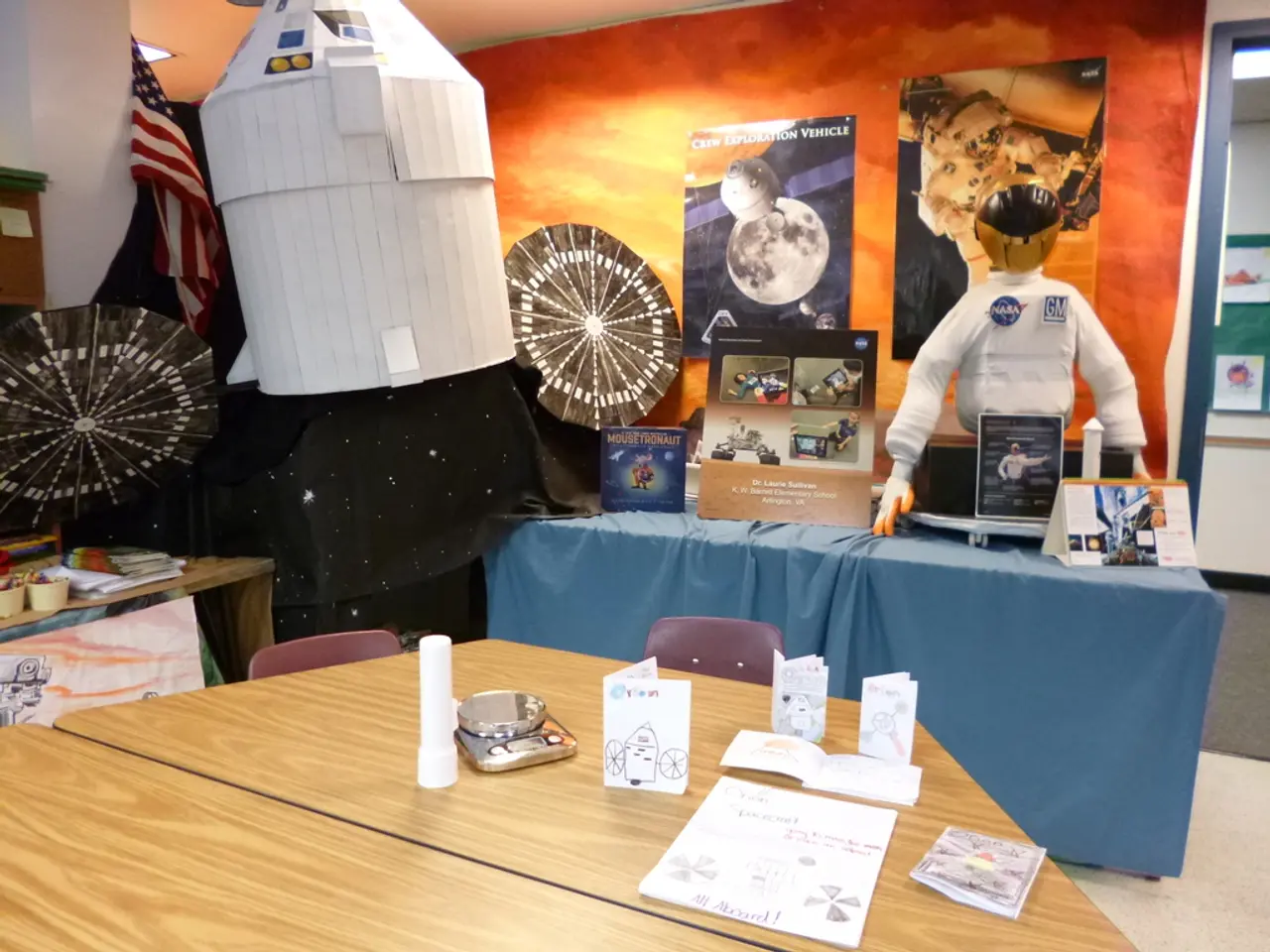Space-based 3D Printing Capability: Enabling Prolonged Space Expeditions
In the realm of space exploration, a significant shift is on the horizon. The integration of 3D printing technology is set to redefine the way we approach deep-space missions, enabling real-time manufacturing and reducing dependency on Earth-based logistics.
Advanced processing technologies are being developed to convert extraterrestrial materials into forms compatible with current additive manufacturing techniques. This innovation opens up a world of possibilities, allowing astronauts to produce tools, replacement parts, and structural components on demand, using raw materials sourced from the spacecraft itself or extraterrestrial bodies.
One proposed solution for sourcing raw materials is in-situ resource utilization, such as extracting materials from lunar regolith or Martian soil. Collaborative efforts between space agencies, private companies, and research institutions continue to refine 3D printing methods for space use.
NASA, in collaboration with SpaceX, is working on in-space 3D printing missions, while the European Space Agency (ESA) is partnering with Airbus Defence and Space SAS and CADMOS in France on metal printing strategies in microgravity. Leibniz University Hannover, in collaboration with the Laser Zentrum Hannover (LZH), is using lunar regolith as a printing material, and ETH Zürich students are developing advanced multimetal laser melting printers for rocket component manufacturing.
Customization is a key strength of additive manufacturing in space. 3D-printed components can be tailored to meet specific needs, enhancing mission flexibility by allowing astronauts to fabricate specific items as needed, minimizing downtime and preventing small issues from escalating into major failures.
Developments such as improved printer designs, advanced material formulations, and automated systems will contribute to making in-space manufacturing more viable for future missions. Research into artificial intelligence and machine learning may help refine autonomous processes for 3D printing in space, enabling future missions to deep-space locations to demand autonomous manufacturing capabilities.
However, the technology faces technical challenges. Microgravity affects the adhesion and layering process, and material selection differences in space conditions must be considered. Ensuring reliability and durability of printed components is also crucial. The logistics of sourcing raw materials for printing in space present another hurdle. Refining these materials to create printable feedstocks poses a technical challenge.
A closed-loop system in 3D printing promotes sustainability by allowing the reprocessing of waste materials into usable feedstock for new prints. This aspect, along with the potential to reduce payload weight by using additive manufacturing significantly lowers launch costs, as heavier payloads require more fuel and resources to transport beyond Earth's atmosphere.
The technology also facilitates the creation of structures that would be difficult or impossible to launch from Earth in their entirety, such as habitats, tools, and spacecraft parts. This aspect is crucial for long-term missions, as it reduces the need for resupply missions and increases self-sufficiency.
As we venture further into the cosmos, understanding the psychological impact of long-term space travel becomes increasingly important. The Effects of Long-Term Microgravity Exposure on Perceived Traveled Distance is a research topic related to this area. Simulating the Void: How NASA Mimics Zero Gravity on Earth is another topic of interest in this regard.
The Expanding Horizons of the Space Economy: An Overview of Operational Domains is a discussion on the potential economic opportunities in various space-related industries. As 3D printing technology continues to evolve and overcome its challenges, it is poised to play a significant role in these emerging industries.
In conclusion, the integration of 3D printing technology into space travel represents a significant step forward in our ability to explore deep space. By overcoming the technical challenges and refining the technology, we can unlock a world of possibilities, from self-sufficient missions to the creation of structures previously thought impossible to launch from Earth.
Read also:
- Peptide YY (PYY): Exploring its Role in Appetite Suppression, Intestinal Health, and Cognitive Links
- Toddler Health: Rotavirus Signs, Origins, and Potential Complications
- Digestive issues and heart discomfort: Root causes and associated health conditions
- House Infernos: Deadly Hazards Surpassing the Flames








